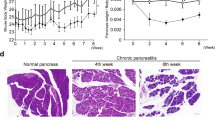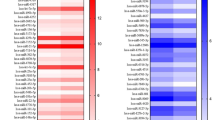Abstract
Hypertrophic scar is an unavoidable result of wound healing following burns and trauma, which remains a challenging problem for clinicians. Previously, we demonstrated that exosomal microRNAs (miRs) of human amniotic epithelial cells accelerated wound healing and inhibited scar formation. However, the underlying mechanism is still unclear. In this particular study, we found that miR-let-7d reduced collagen deposition, and this was accompanied by decreased level of iron content in myofibroblasts. Importantly, inhibition of miR-let-7d in myofibroblasts accelerated collagen deposition and promoted cell proliferation. In addition, bioinformatics prediction combined with classical dual-luciferase reporter gene assay demonstrated that the cellular iron importer divalent metal transporter 1 (DMT1) was a target gene of miR-let-7d, and the miR-let-7d mimics inhibited the expression of DMT1 in myofibroblasts. Moreover, silencing of DMT1 with small interfering RNA (siRNA) reduced the deposition of extracellular matrix. Consistent with the results in vitro, the miR-let-7d mimics effectively ameliorated hypertrophic scar fibrosis in a rabbit ear hypertrophic scar model. Taken together, our results indicated for the first time that miR-let-7d attenuated hypertrophic scar fibrosis through modulation of iron metabolism by reducing iron uptake through DMT1, which may provide a novel therapeutic strategy for hypertrophic scar.







Similar content being viewed by others
Data availability
The data used to support the findings of this study are available from the corresponding author upon request.
Abbreviations
- Col-I:
-
Collagen I
- Col-III:
-
Collagen III
- DMT1:
-
Divalent metal transporter 1
- FTH1:
-
Ferritin heavy chain 1
- FPN1:
-
Ferroportin 1
- miRs:
-
MicroRNAs
- NC:
-
Negative control
- PBS:
-
Phosphate buffer saline
- siRNA:
-
Small interfering RNA
- TFR1:
-
Transferrin receptor 1
- α-SMA:
-
Alpha-smooth muscle actin
References
Ali MK et al (2020) Critical role for iron accumulation in the pathogenesis of fibrotic lung disease. J Pathol 251:49–62. https://doi.org/10.1002/path.5401
Castoldi M, Muckenthaler MU (2012) Regulation of iron homeostasis by microRNAs. Cell Mol Life Sci 69:3945–3952. https://doi.org/10.1007/s00018-012-1031-4
Chen L, Li J, Li Q, Yan H, Zhou B, Gao Y, Li J (2017) Non-coding RNAs: the new insight on hypertrophic scar. J Cell Biochem 118:1965–1968. https://doi.org/10.1002/jcb.25873
Cheng M, Liu P, Xu LX (2020) Iron promotes breast cancer cell migration via IL-6/JAK2/STAT3 signaling pathways in a paracrine or autocrine IL-6-rich inflammatory environment. J Inorg Biochem 210:111159. https://doi.org/10.1016/j.jinorgbio.2020.111159
Chun Q, ZhiYong W, Fei S, XiQiao W (2016) Dynamic biological changes in fibroblasts during hypertrophic scar formation and regression. Int Wound J 13:257–262. https://doi.org/10.1111/iwj.12283
Davis M, Clarke S (2013) Influence of microRNA on the maintenance of human iron metabolism. Nutrients 5:2611–2628. https://doi.org/10.3390/nu5072611
Fagone P et al (2015) Identification of novel targets for the diagnosis and treatment of liver fibrosis. Int J Mol Med 36:747–752. https://doi.org/10.3892/ijmm.2015.2264
Fagone P, Mangano K, Pesce A, Portale TR, Puleo S, Nicoletti F (2016) Emerging therapeutic targets for the treatment of hepatic fibrosis. Drug Discov Today 21:369–375. https://doi.org/10.1016/j.drudis.2015.10.015
Fiorito F et al (2021) MG-132 interferes with iron cellular homeostasis and alters virulence of bovine herpesvirus 1. Res Vet Sci 137:1–8. https://doi.org/10.1016/j.rvsc.2021.04.023
Gao G, Li J, Zhang Y, Chang YZ (2019) Cellular iron metabolism and regulation. Brain iron metabolism and CNS diseases. Advances in experimental medicine and biology, vol 1173. Springer, Singapore, pp 21–32
Ghazawi FM, Zargham R, Gilardino MS, Sasseville D, Jafarian F (2018) Insights into the pathophysiology of hypertrophic scars and keloids: how do they differ? Adv Skin Wound Care 31:582–595. https://doi.org/10.1097/01.ASW.0000527576.27489.0f
Iizuka M, Sagara R (2000) Fe(III)-IDA induces proliferation and sustains functions of various types of cultured cells as a substitute for transferrin. In Vitro Cell Dev-an 36:495–501. https://doi.org/10.1290/1071-2690(2000)036%3c0495:FIIIPA%3e2.0.CO;2
Ishizaka N et al (2002) Iron overload augments angiotensin II-induced cardiac fibrosis and promotes neointima formation. Circulation 106:1840–1846. https://doi.org/10.1161/01.cir.0000031161.77536.02
Juríková M, Danihel Ľ, Polák Š, Varga I (2016) Ki67, PCNA, and MCM proteins: markers of proliferation in the diagnosis of breast cancer. Acta Histochem 118:544–552. https://doi.org/10.1016/j.acthis.2016.05.002
Li B et al (2016) Aberrant Notch signalling contributes to hypertrophic scar formation by modulating the phenotype of keratinocytes. Exp Dermatol 25:137–142. https://doi.org/10.1111/exd.12897
Li J et al (2021) Overexpression of miR-101 suppresses collagen synthesis by targeting EZH2 in hypertrophic scar fibroblasts. Burns Trauma 9:tkab038. https://doi.org/10.1093/burnst/tkab038
Li S, Zhang H, Chang J, Li D, Cao P (2021) Iron overload and mitochondrial dysfunction orchestrate pulmonary fibrosis. Eur J Pharmacol 912:174613. https://doi.org/10.1016/j.ejphar.2021.174613
Lim LP et al (2005) Microarray analysis shows that some microRNAs downregulate large numbers of target mRNAs. Nature 433:769–773. https://doi.org/10.1038/nature03315
Liu J et al (2012) Wnt/β-catenin pathway forms a negative feedback loop during TGF-β1 induced human normal skin fibroblast-to-myofibroblast transition. J Dermatol Sci 65:38–49. https://doi.org/10.1016/j.jdermsci.2011.09.012
Ma H, Wu X, Li Y, Xia Y (2022) Research progress in the molecular mechanisms, therapeutic targets, and drug development of idiopathic pulmonary fibrosis. Front Pharmacol 13:963054. https://doi.org/10.3389/fphar.2022.963054
Papadimitriou N, Thorfve A, Brantsing C, Junevik K, Baranto A, Barreto Henriksson H (2014) Cell viability and chondrogenic differentiation capability of human mesenchymal stem cells after iron labeling with iron sucrose. Stem Cells Dev 23:2568–2580. https://doi.org/10.1089/scd.2014.0153
Ramm GA, Ruddell RG (2005) Hepatotoxicity of iron overload: mechanisms of iron-induced hepatic fibrogenesis. Semin Liver Dis 25:433–449. https://doi.org/10.1055/s-2005-923315
Rosenbloom J, Macarak E, Piera-Velazquez S, Jimenez SA (2017) Human fibrotic diseases: current challenges in fibrosis research. Methods Mol Biol 1627:1–23. https://doi.org/10.1007/978-1-4939-7113-8_1
Shi M, Zong X, Chen L, Guo X, Ding X (2020) MiR-506-3p regulates autophagy and proliferation in post-burn skin fibroblasts through post-transcriptionally suppressing Beclin-1 expression. In Vitro Cell Dev-an 56:522–532. https://doi.org/10.1007/s11626-020-00472-3
Spagnolo P et al (2022) The role of immune response in the pathogenesis of idiopathic pulmonary fibrosis: far beyond the Th1/Th2 imbalance. Expert Opin Ther Targets 26:617–631. https://doi.org/10.1080/14728222.2022.2114897
Torti SV, Torti FM (2013) Iron and cancer: more ore to be mined. Nat Rev Cancer 13:342–355. https://doi.org/10.1038/nrc3495
Wan KC, Lewis WH (1996) Study of free iron and pyridinoline in hypertrophic scars and normal skin. Br J Biomed Sci 53:196–203
Wan KC, Evans JH (1999) Free radical involvement in hypertrophic scar formation. Free Radic Biol Med 26:603–608. https://doi.org/10.1016/s0891-5849(98)00245-7
Weber RA et al (2020) Maintaining ironhomeostasis is the key role of lysosomal acidity for cell proliferation. Mol Cell 77:645-655.e647. https://doi.org/10.1016/j.molcel.2020.01.003
Wei Y et al (2021) LncRNA TRHDE-AS1 inhibit the scar fibroblasts proliferation via miR-181a-5p/PTEN axis. J Mol Histol 52:419–426. https://doi.org/10.1007/s10735-021-09968-y
Yanatori I, Kishi F (2019) DMT1 and iron transport. Free Radic Biol Med 133:55–63. https://doi.org/10.1016/j.freeradbiomed.2018.07.020
Zhang Q, Tao K, Huang W, Tian Y, Liu X (2013) Elevated expression of pleiotrophin in human hypertrophic scars. J Mol Histol 44:91–96. https://doi.org/10.1007/s10735-012-9453-8
Zhang J, Li Y, Bai X, Li Y, Shi J, Hu D (2018) Recent advances in hypertrophic scar. Histol Histopathol 33:27–39. https://doi.org/10.14670/HH-11-908
Zhao B et al (2017) Exosomes derived from human amniotic epithelial cells accelerate wound healing and inhibit scar formation. J Mol Histol 48:121–132. https://doi.org/10.1007/s10735-017-9711-x
Zhao B et al (2018) Exosomal microRNAs derived from human amniotic epithelial cells accelerate wound healing by promoting the proliferation and migration of fibroblasts. Stem Cells Int 2018:5420463. https://doi.org/10.1155/2018/5420463
Zhu Y et al (2021) Clioquinol attenuates pulmonary fibrosis through inactivation of fibroblasts via iron chelation. Am J Respir Cell Mol Biol 65:189–200. https://doi.org/10.1165/rcmb.2020-0279OC
Acknowledgements
This work was supported by the National Natural Science Foundation of China (81901964) and the Booster Plan of Xijing Hospital (XJZT18MJ10).
Funding
This work was supported by the National Natural Science Foundation of China (81901964) and the Booster Plan of Xijing Hospital (XJZT18MJ10).
Author information
Authors and Affiliations
Corresponding authors
Ethics declarations
Competing interests
None.
Additional information
Publisher's Note
Springer Nature remains neutral with regard to jurisdictional claims in published maps and institutional affiliations.
Rights and permissions
Springer Nature or its licensor (e.g. a society or other partner) holds exclusive rights to this article under a publishing agreement with the author(s) or other rightsholder(s); author self-archiving of the accepted manuscript version of this article is solely governed by the terms of such publishing agreement and applicable law.
About this article
Cite this article
Zhao, B., Shi, X., Feng, D. et al. MicroRNA let-7d attenuates hypertrophic scar fibrosis through modulation of iron metabolism by reducing DMT1 expression. J Mol Histol 54, 77–87 (2023). https://doi.org/10.1007/s10735-023-10113-0
Received:
Accepted:
Published:
Issue Date:
DOI: https://doi.org/10.1007/s10735-023-10113-0




